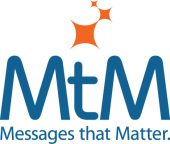It will be time to buy Microsoft stock when it eliminates “empower” from its corporate vocabulary.
Microsoft uses “empower” everywhere, and you’ve probably seen TV ads that claim the Microsoft Cloud empowers your business. But if you are like me, you don’t get the benefit.
Empower is one of the most overused buzzwords in B2B technology marketing. When you use “empower,” you sound like everyone else. It is so “me too” that it is hard to understand why any B2B marketer would even use the word, which means to enable or permit.
Besides overuse, which results in lack of differentiation, the biggest problem with “empower” is most target buyers don’t know what it means. I had some idea but still had to look it up in my trusty dictionary. It has nebulous meaning to most and can be interpreted by the target audience in many different ways, which works against effective positioning.
But I give Microsoft credit on two fronts. First, it has been using “empower” for as long as I can remember, and owns the position. That’s because consistency and repetition are the most important factors in claiming a position in your market.
Second, Microsoft explains what “empower” means to those interested in its cloud offering. Here is content from the Microsoft Cloud web site:
“We’re creating technology that becomes essential but invisible, to help you build something amazing — whether you need on-demand scalability, technology to connect your people, or real-time data insights. The Microsoft Cloud is designed to empower your business, so you can do more and achieve more.”
The problem with “you can do more and achieve more” is that it doesn’t address a target audience problem. Companies are moving applications to the web to solve a specific business problem, not to just “do more and achieve more.” Some, but not all of the reasons companies are moving to the cloud include: computing costs are out of control, IT infrastructure is falling apart, IT needs to be more productive and business problems that require new software that’s only available as a service (SaaS).
An effective positioning statement needs to state a benefit that solves the target audience’s most pressing problem. When it does, and only you are making the claim, you’ve found the right position for your product, services, offering, etc. “Empower” fails both tests. If Microsoft stops using “empower” and starts claiming a position that addresses a real business problem, it’s time to buy the stock.
